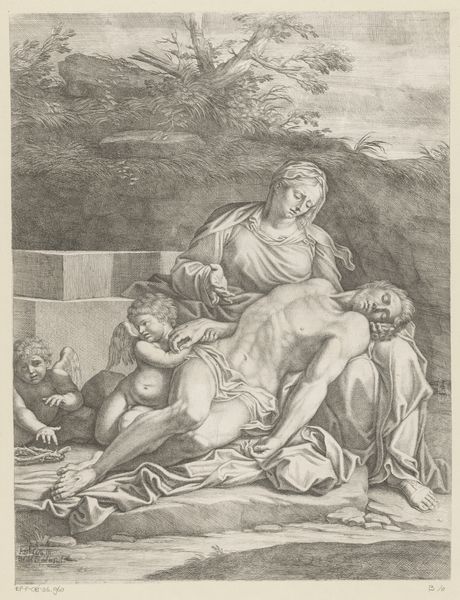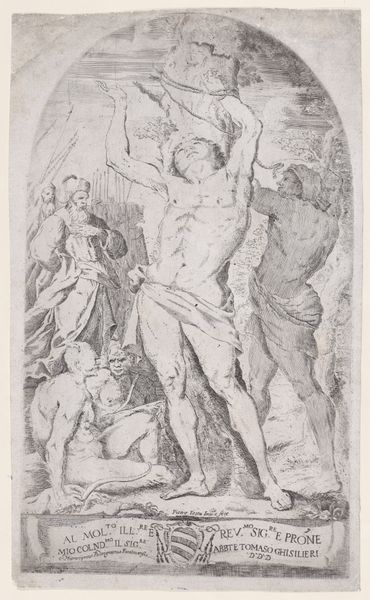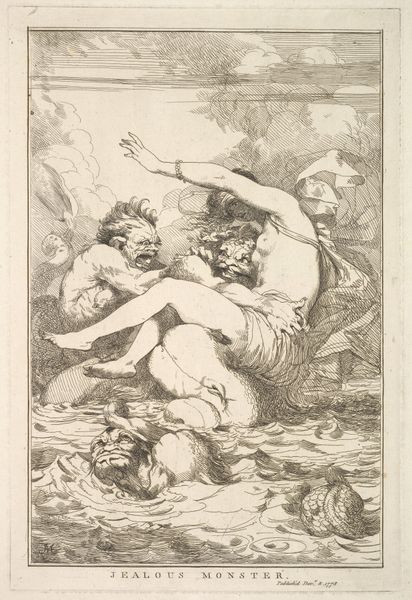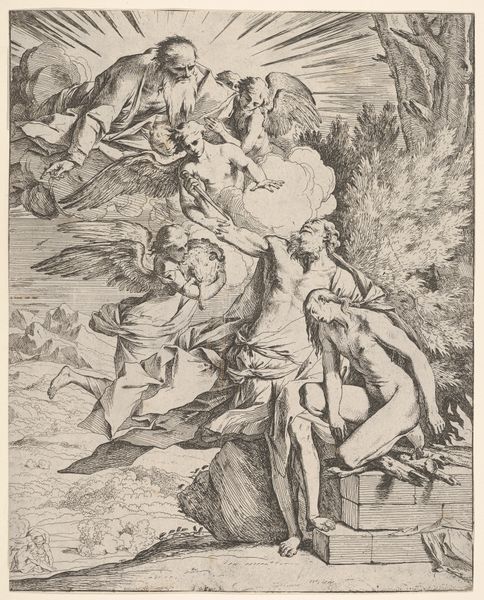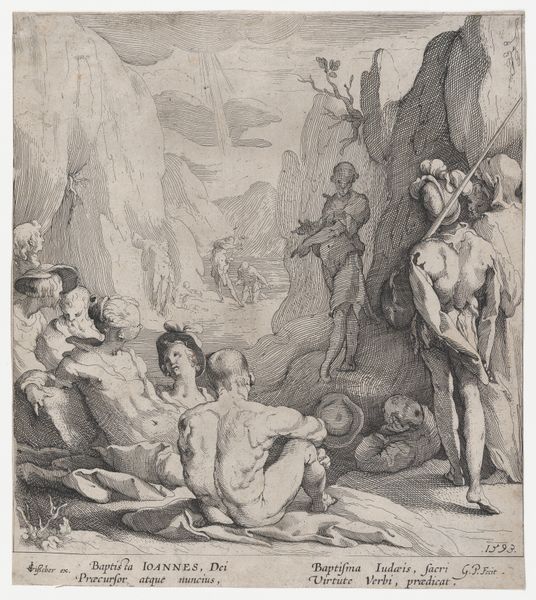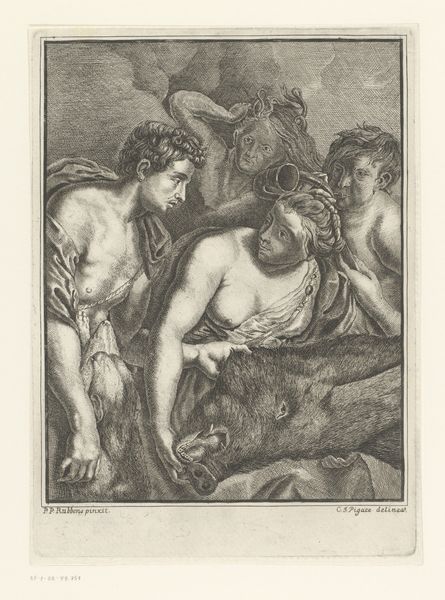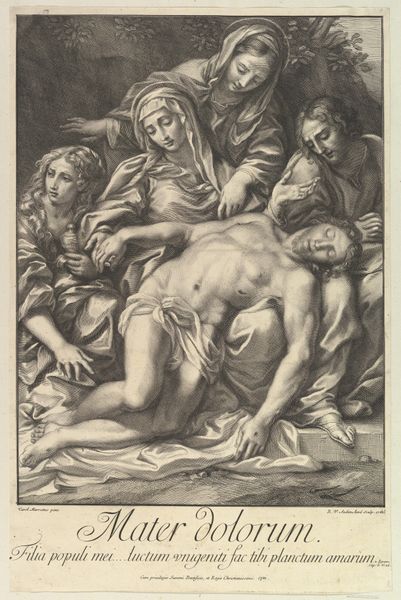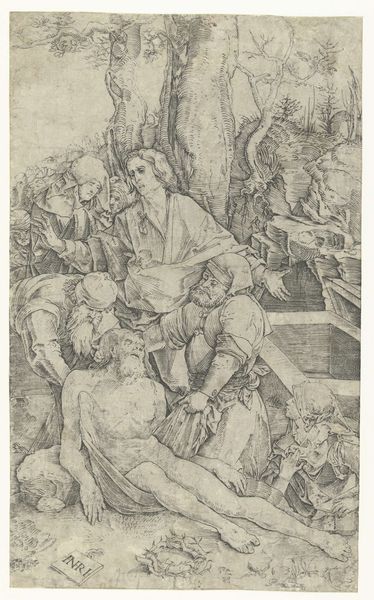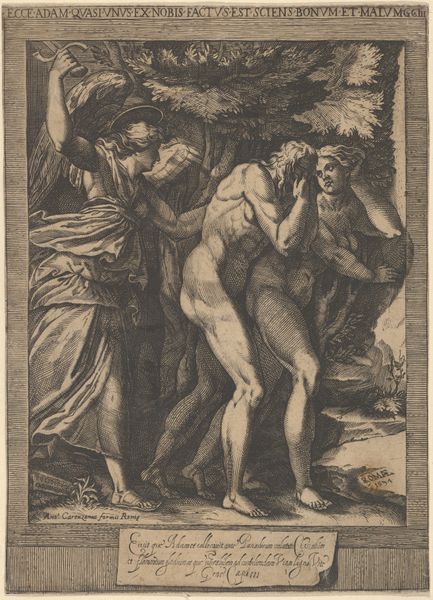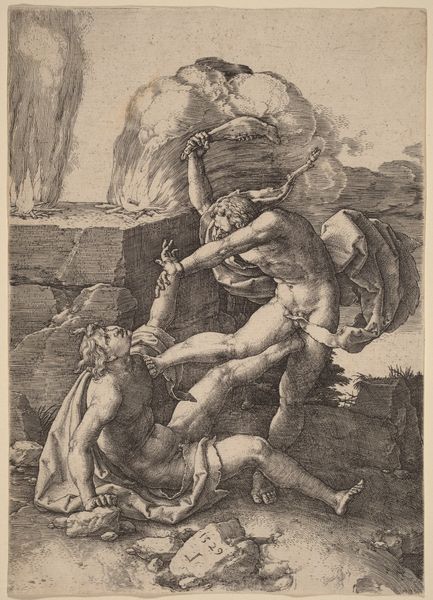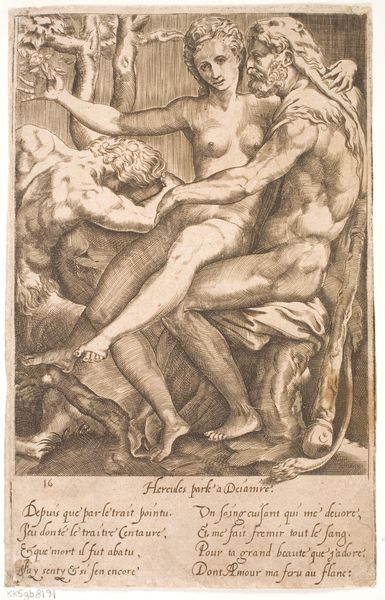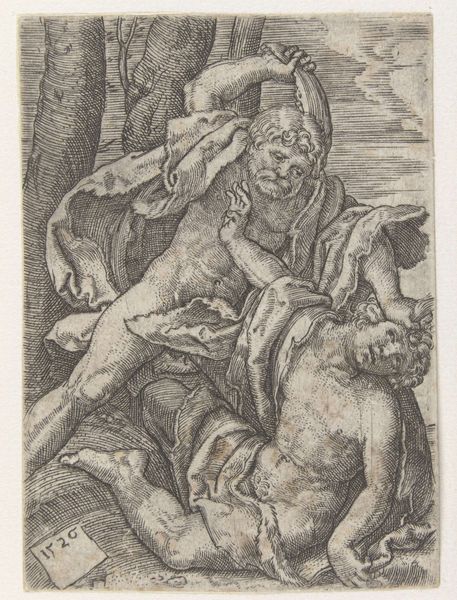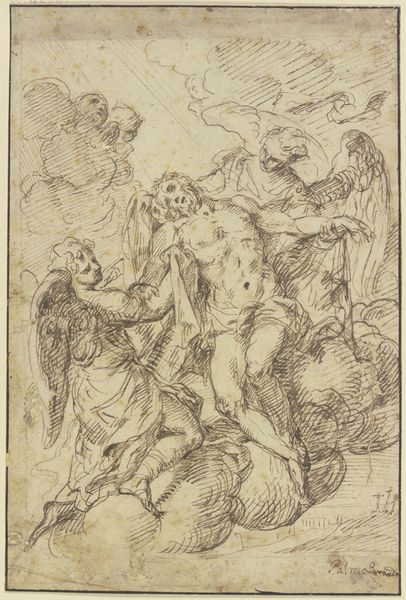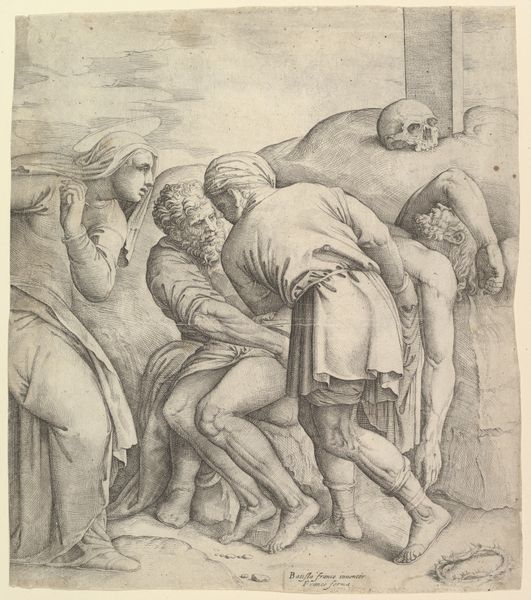
print, engraving
#
baroque
# print
#
figuration
#
history-painting
#
engraving
Dimensions: plate: 19.4 x 12.7 cm (7 5/8 x 5 in.) sheet: 19.9 x 12.9 cm (7 13/16 x 5 1/16 in.)
Copyright: National Gallery of Art: CC0 1.0
Paul Troger etched this Pietà sometime in the first half of the 18th century. The image depicts the Virgin Mary cradling the dead body of Christ, a common subject for art of this period. But what does it mean for an artist to represent such a violent and tragic scene? Religious art in the Austrian Baroque did not simply illustrate bible stories, it sought to inspire devotion and reinforce the power of the Catholic Church. The emotional intensity of the Pietà was part of a broader strategy to engage viewers, prompting them to identify with the suffering of Christ and Mary. This was a period of Counter-Reformation, when the Church was trying to win back followers lost to Protestantism. To truly understand this print, we must consider its place within the religious and political landscape of the time, exploring the social conditions that shaped its creation and reception. It requires that we delve into historical archives, theological texts, and the broader visual culture of Baroque Austria.
Comments
No comments
Be the first to comment and join the conversation on the ultimate creative platform.
